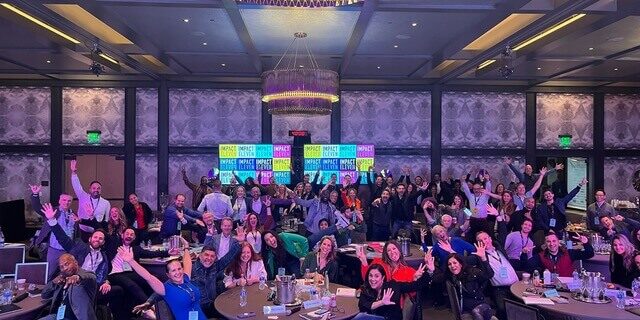Successful leaders seeking to inspire and galvanize their teams should start by developing a personal leadership vision statement to act as a “true north” to guide them in times of adversity and change.
How do you write a personal leadership vision statement? You start by answering three fundamental questions.
Who Do You Want to Be?
The future can be intimidating, and leaders often get overwhelmed thinking about what’s ahead and what it means for them.
I’ve found that it helps to start small. Early on in the pandemic, as I contemplated our new reality and all its repercussions, I made the decision to selectively surrender to the situation. I relinquished control of what I could not control, and I chose to be very clear and specific about what I could accomplish.
As I envisioned the future, I reflected on who I wanted to be in 90 days. Three months is a digestible span of time in which real growth can happen, after which you can emerge a better version of yourself no matter what happens externally and outside of your control. Achieving these short-term goals sets you up for success in pursuing your long-term goals.
Embrace this as a chance to develop long-held personal and professional goals that have been lost in the commotion of everyday life. What are some habits you’ve always wanted to focus on? What have you always wanted to do? Who have you always wanted to be? These are all critical parts of your personal vision statement for leadership.
It’s important that leaders take care of themselves — you can’t pour from an empty cup. Taking time to nurture your own growth will benefit your organization by making you a more effective and resilient leader.
Why Are You Setting This Goal?
Knowing what you want to accomplish isn’t always enough to achieve your goals. In fact, 92% of people who set goals fall short of accomplishing them. Use that as motivation to keep your goals manageable. Let it also be a cause for celebration when you do achieve them.
Since you can’t achieve everything, it’s necessary to pick your goals carefully. Ask yourself why you’re setting this goal. Think in emotional and personal terms — how will fulfilling this personal vision statement make you feel? Then, think of your larger role as a leader. Reflect on who will benefit from you accomplishing it.
You also need to reflect on a second essential question: What are the consequences of not accomplishing this goal?
Steep yourself in the reality of continuing down your current path. What will happen if nothing changes? What will your life or your organization look like down the road? How will that reality affect the people you care about? How will it impact you?
Careful consideration of these questions strengthens your resilience. When we get specific about the consequential realities of two different paths, we make it into something larger than ourselves. That’s remarkably effective — our intrinsic motivation expands when our actions become about more than just the self.
What Will It Take to Get There?
Internal and external setbacks are an inherent part of the journey to becoming more. Often, internal ones are more difficult to surmount, demanding discipline as we make tough choices about how we spend our time and energy. We’ve established we can’t have everything. This means we must give things up, sometimes things that have become significant parts of our lives
Those sacrifices become much easier to swallow when you remember the great kindness you are giving to your future self. Remind yourself not to give up what you want most for what feels good today.
The question to ask here requires self-provocation: In this particular moment in time, what is getting in the way of you becoming more? Maybe that means watching less TV. Maybe it means giving up your golf habit.
Whatever it is, make a “quit list” of the habits and behaviors that are, if not actively holding you back, at least distracting you from your larger vision.
Remind yourself these sacrifices are temporary, but necessary, allowing you to relocate your energy and accelerate momentum toward becoming a better you.
This crucial act of reflection cultivates self-awareness, creating the space for you to reflect on your reality and reset priorities. It is also an exercise in the practice of delayed gratification—success often depends on the ability to resist the temptation of fleeting whims and the need to be satisfied in the moment.
Think back to team members who are engaged versus those who aren’t. It’s much easier to put in a hard day’s work knowing you’re progressing towards a specific and valued goal, as opposed to just drifting until you can call it a night.


![[RYAN] Featured_Why Human-Centered Leadership Is the Future of Growth [RYAN] Featured_Why Human-Centered Leadership Is the Future of Growth](https://ryanestis.com/wp-content/uploads/bb-plugin/cache/RYAN-Featured_Why-Human-Centered-Leadership-Is-the-Future-of-Growth-1024x538-panorama-78e9dc1762c564216c0e9d2780c005b1-.jpg)







